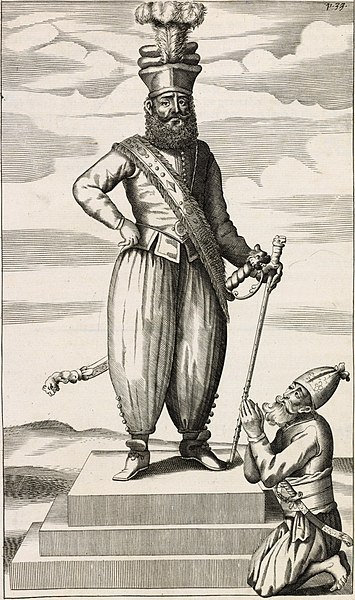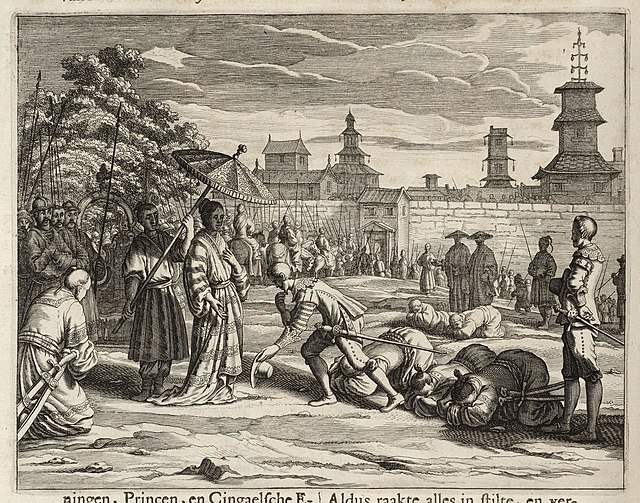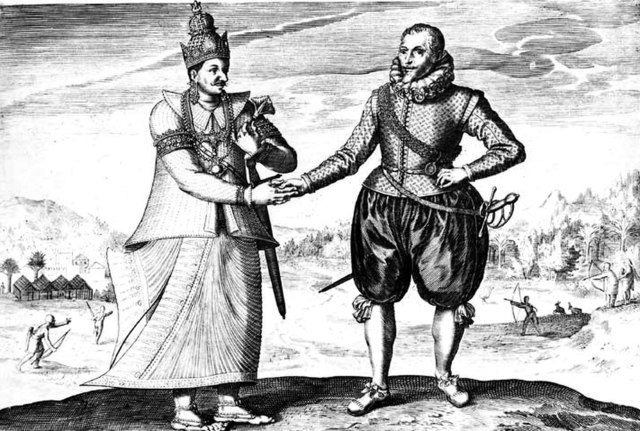King Rajasinghe II, also known as Rajasingha II, was a Sinhalese King, reigned 1629 – 6 December 1687; seventh king of the Kingdom of Kandy in Sri Lanka. Rajasingha requested aid from the newly formed Dutch East India Company to help expel the Portuguese from the island, which they successfully did in 1656. By this time however it had become clear to the Kandyans that the Dutch not only intended to expel the Portuguese but to replace them as the major colonial power on the island. This transfer of power is also believed to be where the Sinhala idiom / figure of speech “ඉඟුරු දී මිරිස් ගත්තා වාගේ” Inguru di miris gaththa wagay was originated - in reference that the Dutch Rule was much more of a menace to the king and cruel to the people in the island than the Portuguese. From 1645 onwards Rajasingha was engaged in sporadic warfare with his erstwhile allies.
Rajasingha II, from Robert Knox's A Historical Relation of the Island Ceylon, 1693
The rugged terrain of the Kandyan kingdom, an area now largely within the modern Central Province
The fort of Galle in southern Sri Lanka, first a Portuguese, then a Dutch stronghold
The arrival of general Hulft at the court of Rajasingha II (by Johannes Janssonius Waasbergen, circa 1672)
The Kingdom of Kandy was a monarchy on the island of Sri Lanka, located in the central and eastern portion of the island. It was founded in the late 15th century and endured until the early 19th century.
The Ella Gap – typical of the mountainous and densely forested terrain of the Kingdom of Kandy
Portuguese governor Pedro Lopes de Sousa welcomes Kusumasana Devi a.k.a. Dona Catharina during the campaign of Danture, 1594
King Vimaladharmasurya I receiving Joris van Spilbergen, 1603
Dutch Colombo, based on an engraving of c. 1690








